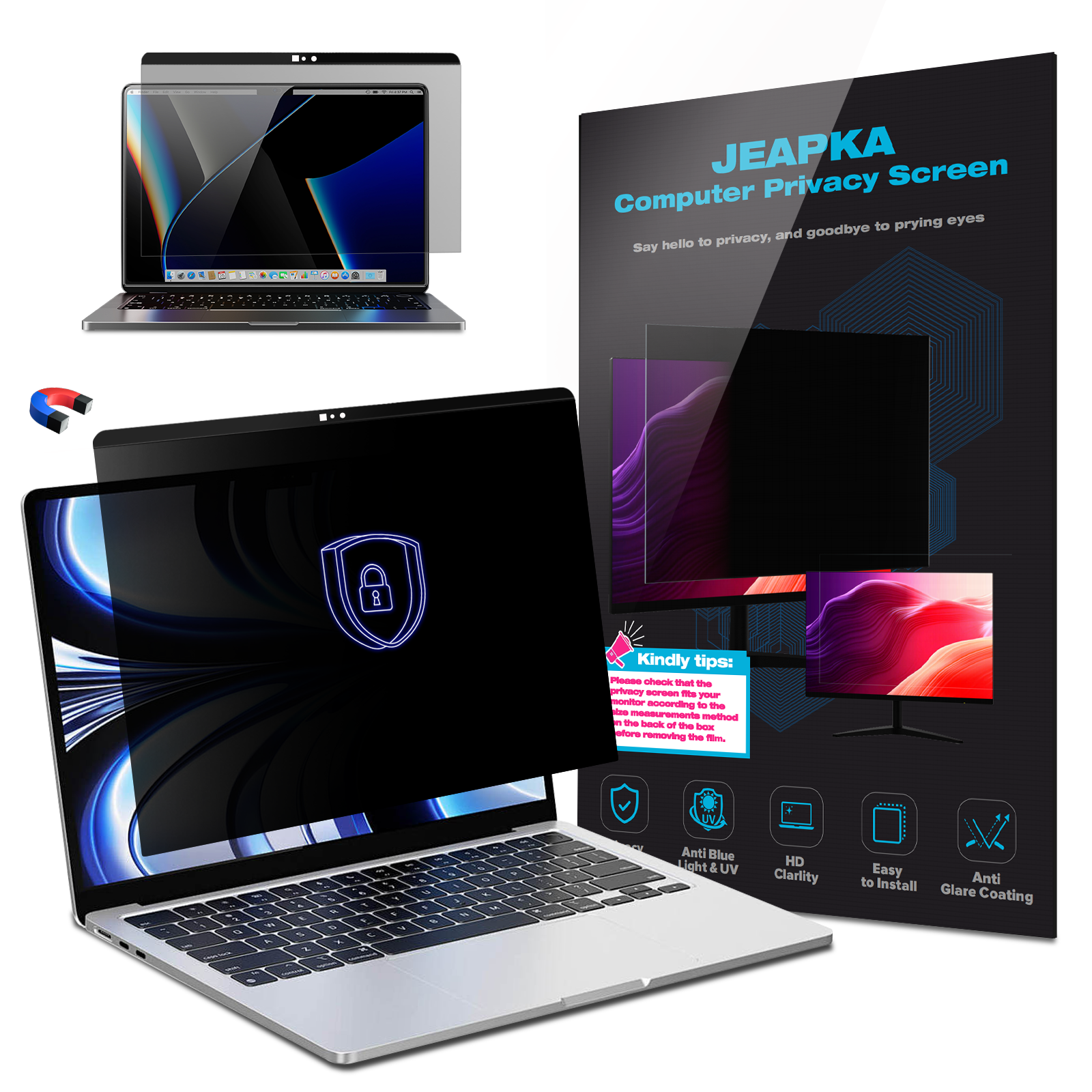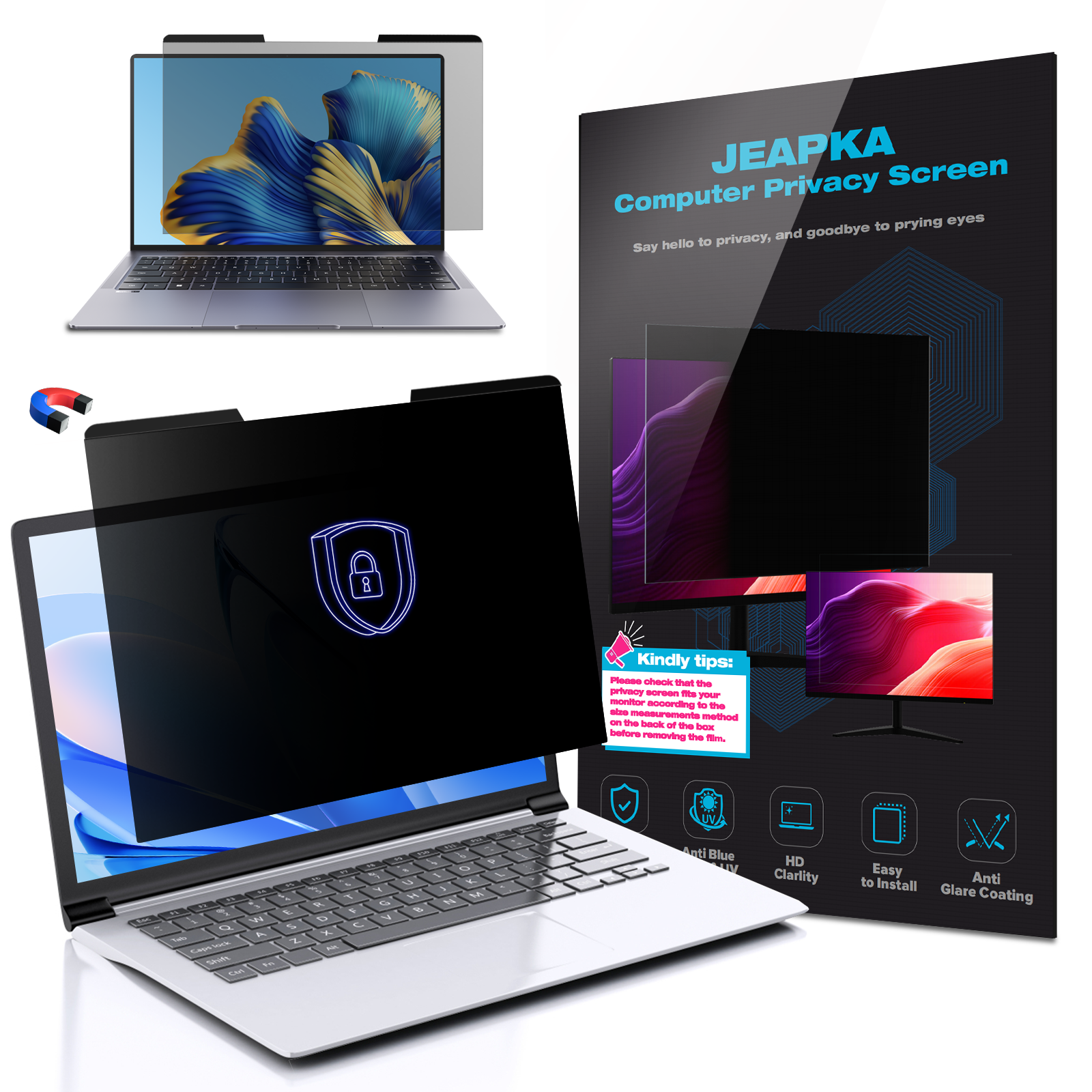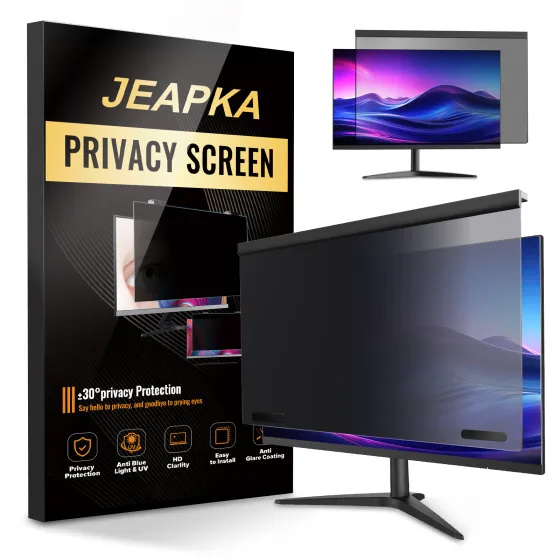Get JEAPKA Product News, Webinars and Promos Directly to Your inbox.
Subscribe Now
Understanding the Different Levels of Privacy Offered by Screen Filters
Release time:
2025-04-07
Understanding the Different Levels of Privacy Offered by Screen Filters
Table of Contents
- 1. Introduction to Screen Filters and Privacy
- 2. What Are Screen Filters?
- 3. Different Types of Screen Filters
- 3.1 Privacy Filters
- 3.2 Blue Light Blocking Filters
- 3.3 Anti-Glare Filters
- 3.4 Touch Screen Compatible Filters
- 4. How Screen Filters Work
- 5. Benefits of Using Screen Filters
- 6. Choosing the Right Screen Filter for Your Needs
- 7. Common Misconceptions About Screen Filters
- 8. FAQs
- 9. Conclusion
1. Introduction to Screen Filters and Privacy
In today's digital world, privacy has become a significant concern. With the increasing amount of sensitive information accessed on personal devices, the need for protective measures has never been more pressing. Screen filters are an effective solution for enhancing privacy while using computers, laptops, and mobile devices. This article delves into the various levels of privacy offered by screen filters and guides you in choosing the best fit for your requirements.
2. What Are Screen Filters?
Screen filters are specialized products designed to cover the screens of electronic devices. They serve multiple purposes, including protecting screens from scratches and minimizing glare, but their primary function is to enhance privacy. By restricting the viewing angle, these filters help prevent unauthorized individuals from seeing the content displayed on your device.
3. Different Types of Screen Filters
Screen filters come in various types, each offering different levels of privacy and additional features. Below, we explore the most common types available in the market.
3.1 Privacy Filters
Privacy filters are designed specifically to obscure the screen from side views. They typically limit the viewing angle to around 30 degrees. This means that individuals directly in front of the screen can view the content clearly, while those attempting to glance from the side will see a blackened or obscured image. This design is ideal for professionals working in public spaces, as it effectively shields sensitive information from prying eyes.
3.2 Blue Light Blocking Filters
While blue light blocking filters primarily focus on reducing exposure to blue light emitted from screens, many also provide a degree of privacy. These filters usually have a slight tint that not only protects your eyes from strain but also minimizes glare, making it difficult for onlookers to read the screen content.
3.3 Anti-Glare Filters
Anti-glare filters reduce reflections and improve visibility in bright environments. While their main purpose is to enhance screen clarity and comfort during use, they can also add a layer of privacy by making it harder for someone to see what’s on the screen from an angle.
3.4 Touch Screen Compatible Filters
Touch screen compatible filters allow users to maintain the functionality of their devices while providing privacy. These filters protect touch screens from scratches and smudges while still enabling smooth interaction. They are available in various privacy levels, ensuring users can choose according to their specific needs.
4. How Screen Filters Work
Screen filters utilize specialized materials that manipulate light in various ways to achieve privacy and display enhancement. Privacy filters generally consist of micro-louvers that restrict the viewing angle, effectively blocking the screen's visibility from the sides. These filters can be applied using adhesives or static cling, making them easy to install and remove.
In anti-glare filters, a matte finish is applied to the surface, diffusing light and preventing reflections. Blue light filters include a coating that absorbs blue light wavelengths, thereby reducing eye strain while still allowing for a clear view from the front.
5. Benefits of Using Screen Filters
The advantages of installing screen filters are numerous and beneficial for various users. Here are some of the key benefits:
Enhancing Privacy
Screen filters are primarily used to enhance privacy. By limiting the viewing angle, they effectively prevent unauthorized individuals from viewing sensitive information, making them ideal for professionals who often work in coffee shops, airports, or public transport.
Reducing Eye Strain
Many screen filters, particularly blue light blocking filters, can help reduce eye strain during prolonged screen usage. This is especially important for those who work in front of a computer for extended periods.
Protecting Screens
Screen filters not only enhance privacy but also protect screens from scratches, smudges, and dust. This prolongs the device's lifespan and maintains its resale value.
Improving Visual Comfort
Anti-glare filters significantly improve visual comfort, especially in bright environments. They reduce harsh reflections and improve visibility, allowing for a more pleasant viewing experience.
Versatility
Screen filters are available for a wide range of devices, including laptops, tablets, and smartphones. This versatility means that users can protect all their devices with appropriate filters.
6. Choosing the Right Screen Filter for Your Needs
Selecting the right screen filter depends on your specific requirements. Here are some factors to consider:
Determine Your Privacy Needs
If you frequently work in public spaces and handle sensitive information, a privacy filter should be your top choice. For general use, a blue light blocking filter may suffice.
Consider Your Device Type
Ensure that the filter you select is compatible with your device type. Some filters are designed for touch screens, while others may not be.
Evaluate Additional Features
Consider whether you need features like anti-glare properties or blue light blocking abilities. These features can significantly enhance your overall experience.
7. Common Misconceptions About Screen Filters
There are a few misconceptions surrounding screen filters that can lead users to make uninformed choices:
Screen Filters are Only for Privacy
While privacy is a primary function, screen filters also provide protection against scratches, glare, and blue light, making them multifaceted tools.
All Screen Filters are the Same
Not all screen filters offer the same level of privacy or protection. It is essential to understand the specific features of each type before making a purchase.
Screen Filters Affect Screen Clarity
While some filters may slightly alter the clarity of the screen, modern technology has improved filter design to maintain high visibility without sacrificing privacy.
8. FAQs
1. Do screen filters affect touchscreen functionality?
Most modern screen filters are designed to be touch-sensitive, ensuring that functionality remains intact while providing privacy and protection.
2. How do I clean my screen filter?
It’s best to use a microfiber cloth and a gentle cleaning solution. Avoid abrasive materials that can scratch the filter.
3. Can I use a privacy filter on my smartphone?
Yes, privacy filters are available for smartphones and can provide protection against unauthorized viewing.
4. Are privacy filters removable?
Yes, many privacy filters can be easily removed and reapplied without leaving residue, making them user-friendly.
5. How do I know which filter is right for my needs?
Assess your usage habits and privacy requirements to determine the best filter type for your situation.
9. Conclusion
Screen filters are essential tools for anyone looking to enhance their privacy and protect their devices. With various types available, each offering unique benefits, it is crucial to understand the options at your disposal. By considering your specific needs regarding privacy, screen protection, and visual comfort, you can choose the right screen filter that best suits your lifestyle. Investing in a quality screen filter not only safeguards your sensitive information but also contributes to a more enjoyable and comfortable viewing experience.
Related News












